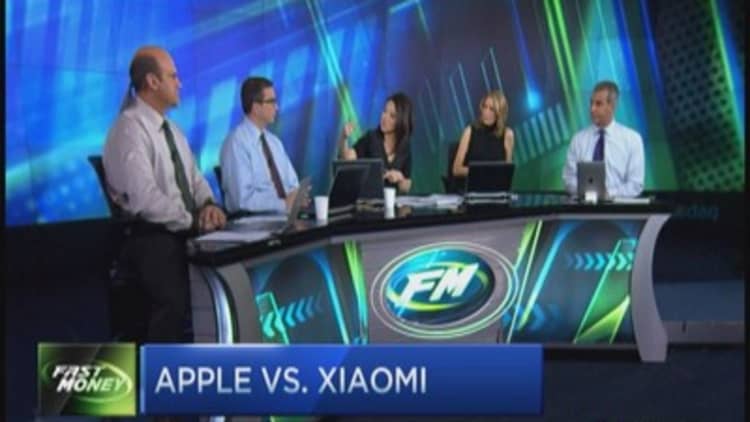Xiaomi is likely to be the biggest smartphone maker you've never heard of.
The company – often dubbed "China's Apple" by analysts - has had a rapid rise in 2014, coming out of nowhere to knock Samsung off the smartphone top spot in China and propelling itself to number three smartphone vendor globally, according to IDC.
Investors are flocking to put money into Xiaomi, a company that was only founded in 2010. It raised more than $1 billion in the latest round of funding, according to the Wall Street Journal, giving the Chinese company a $45 billion valuation – bigger than Uber, Netflix and Twitter.
But how has Xiaomi risen so far so fast?
Razor-thin margins
Xiaomi's success has been driven by the Chinese market where it sells over 90 percent of its smartphones and is the number one player.
The company is known for its high-spec smartphones, which can take on its premium rivals such as Apple and Samsung, but sells at less than half the cost. This comes at a price for Xiaomi which has an approximately 3 percent margins on its phones, analysts said.
"Xiaomi has changed the game because it has such a strong image of affordability but with equally strong functionality for the phone," Can Huang, senior research analyst at Mintel, told CNBC by phone.
But Xiaomi is not worried about margins. Shipping their flagship Mi4 smartphones are a way to give users a platform to use the company's software.
"Sometimes we call Xiaomi the Chinese Apple and that gives you a hint about how it is perceived. They have a long term strategy on building an ecosystem and pathway through the hardware to get the software to closely interact with people's lives," Huang said.
Online-only selling
Xiaomi has run a forum since its inception where consumers and developers can post and chat. This allows Xiaomi to quickly act on feedback and has led to them releasing updates for their software every couple of weeks to keep their offering up-to-date.
In addition, the company also sells their phones in China and India, its second-biggest market, through online-only channels, keeping the cost base down and appealing to a tech-savvy audience.
Xiaomi also operates its own app store – like Google Play or Apple's App Store – keeping users in its ecosystem.
Earlier this year, Xiaomi announced it was entering 10 new markets including Brazil and Russia. But analysts said that as the Chinese smartphone maker looks to expand aggressively into new countries, the strategies that helped it succeed in its home market might not work elsewhere.
Rising costs
Xiaomi sold 26.1 million smartphones in the first half of 2014, soundly beating the 18.7 million full-year 2013 figure, and this was largely due to its online sales channel in China.
In India, Xiaomi's devices are sold through ecommerce website Flipkart, despite a brief ban earlier this month. But the strategy of web-only sales might not translate across other markets, and trying to work out the right sales strategy could increase the company's cost base, analysts said.

"They will have to see how they are able to manage the costs while trying out different models," Kiran Kaur, senior market analyst for client devices at IDC, told CNBC by phone.
"The trick for Xiaomi is that they have managed the cost so well. But if they bring in multiple distribution channels that will increase cost and dilute their cost-competitive advantage."
EU, US out of reach?
Not only will Xiaomi have to rethink its distribution strategy, but the smartphone maker might also run into legal challenges. Earlier this month, Xiaomi was slapped with a temporary ban on selling devices in India after Ericsson claimed the company infringed its patents, with analysts suggesting this could be an issue in other markets.
Xiaomi's CEO Lei Jun has continually said the company can be bigger than Apple and Samsung with a growth strategy broadly focused on emerging markets. But any attempt to take on either of the two smartphone giants in their home markets might run into problems.
Firstly, the majority of consumers in the U.S. and U.K. buy phones on contracts allowing them to purchase premium phones at a low cost. And more worryingly, according to some analysts, is the fact that Xiaomi won't have the brand power to dislodge the likes of Apple or Samsung.
"It will be hard work because they don't do conventional advertising at all. The vast majority is word of mouth and social media, but that won't last. They don't have the kind of brand presence outside of Asia to really sustain that," James Moar, research analyst at Juniper Research, told CNBC by phone.
"They won't expand at anything like the pace we've seen so far."


